Guest post by Kim Mikus
This article appears in the summer 2025 issue of Horizons, the award-winning quarterly magazine of the Lake County Forest Preserves in northern Illinois.
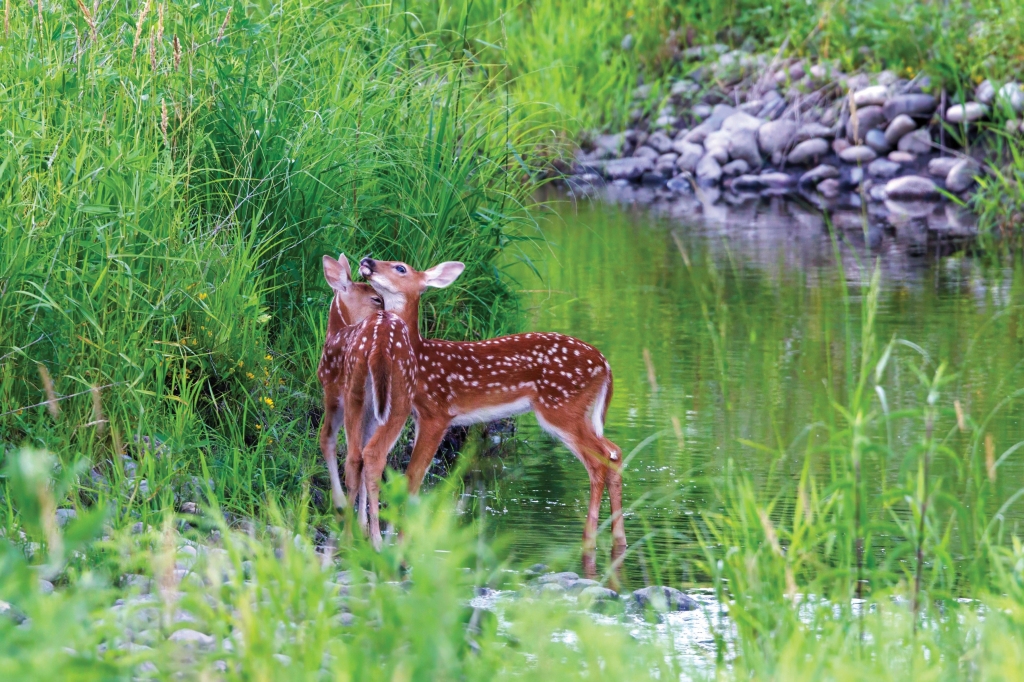
Imagine stepping into the woods, leaving behind the noise and stress of daily life. As you pause and breathe, a sense of calm takes over. There’s no rush or destination, only the soothing quiet of the woodland. Welcome to forest bathing, a practice that invites you to reconnect with yourself and nature.
Forest bathing, also called shinrin-yoku or forest therapy, involves immersing yourself in the outdoors—not through exercise or hiking, but by simply being present in the natural world. Its roots stretch back to a 1980s-era effort launched by Japan’s Ministry of Agriculture to help the country’s population reduce stress and improve health.
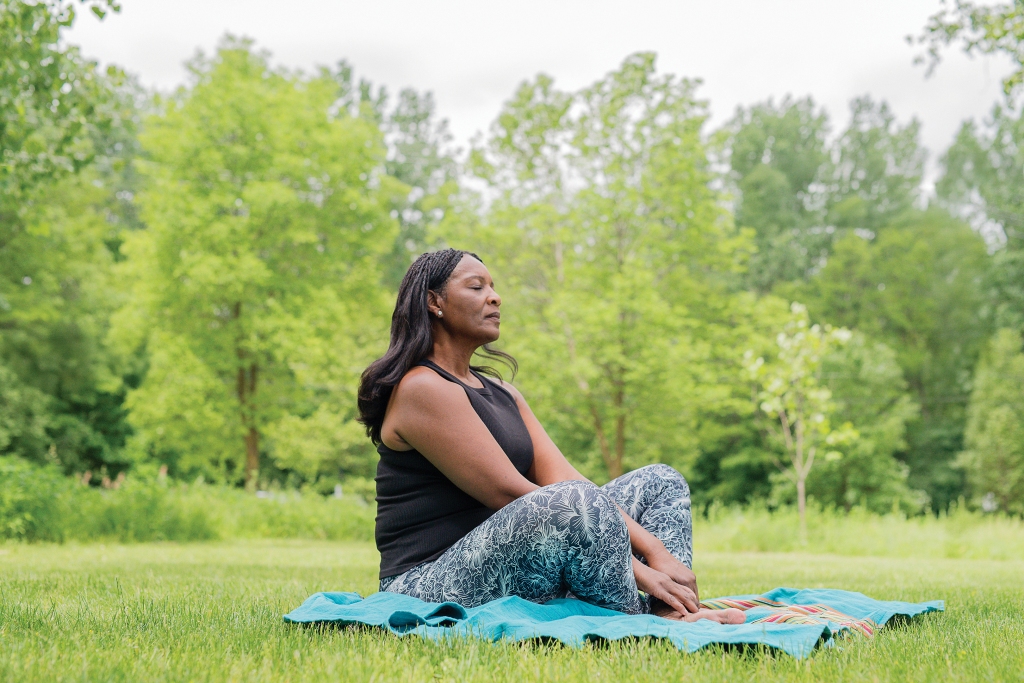
Despite the name, there’s no water or towels involved. The practice centers on mindfulness, breathing deeply and allowing the landscape to work its magic.
“Forest bathing is a gentle walk in nature, where you bathe your senses in the ambiance of the environment,” said Retta Hennessy, a certified forest therapy guide at The Morton Arboretum in Lisle. She received training through the Association of Nature and Forest Therapy Guides and Programs, an organization that blends mindfulness, nature connection and wellness practices.
Researchers have found that time spent outside lowers blood pressure and heart rate, reduces stress hormones and even boosts the immune system.
“Forest bathing supports both physical and mental health,” according to a 2019 study in Environmental Health and Preventive Medicine. Being outdoors without distractions helps people feel calmer and more balanced. “It’s about giving yourself permission to slow down and be present,” Hennessy said.

Find Peace, Not Pace
While outdoor exercise can improve your mood and physical health, self-guided forest bathing provides a different experience. It’s not about speed or fitness targets; it’s about slowing down and awakening your senses.
There’s no agenda, no distance to cover, no pace to follow. Hennessy encourages you to fully soak in the experience. Let your senses lead the way:
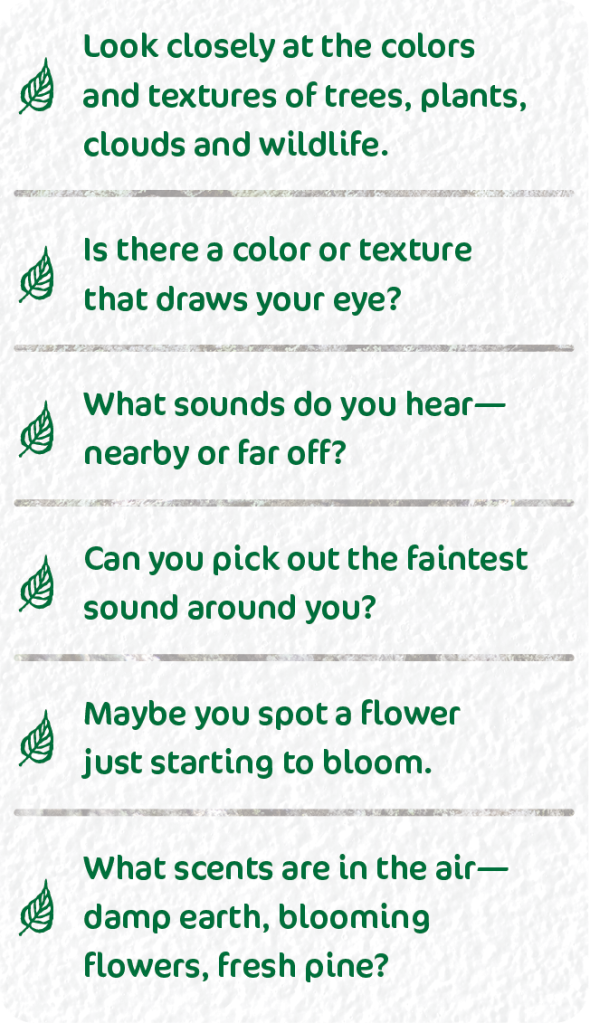
More and more people are turning to nature to unplug and reset. Forest bathing is growing nationwide and around the world—from South Korea to Sweden to New Zealand.
While exact numbers are hard to pin down, the Association of Nature and Forest Therapy has trained about 3,000 guides across 70 countries.
“Forest bathing has been life-changing for me. It’s a simple, powerful way to slow down, clear your mind and reconnect with nature and yourself.”
Susmitha Kilaru, forest therapy guide
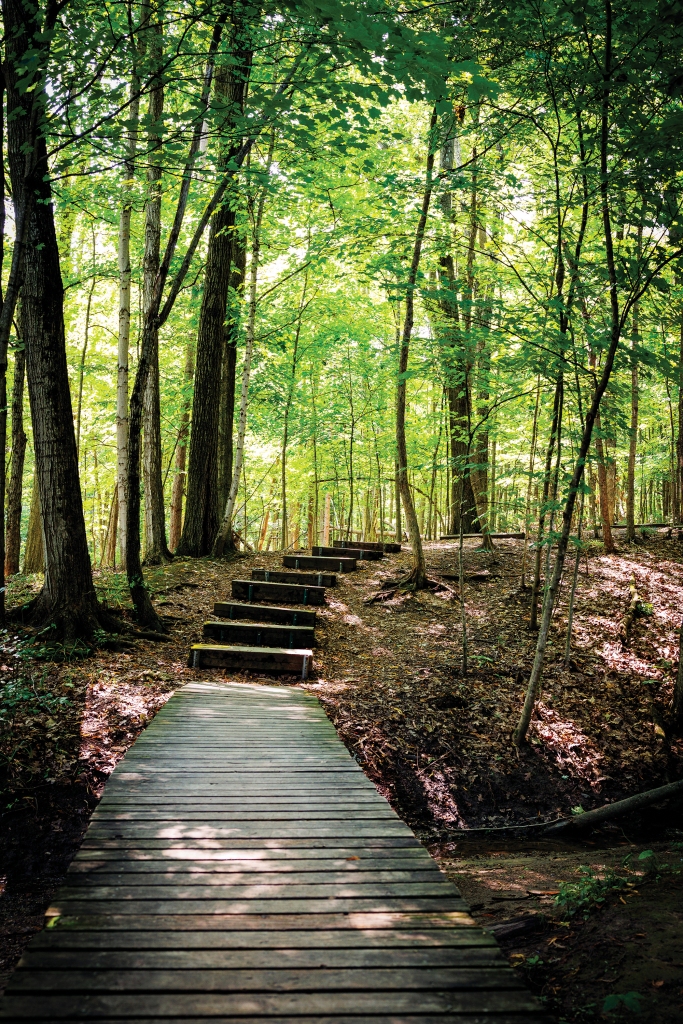
Nature’s Simple Pleasures
What’s great about forest bathing is how simple it is. You don’t need special gear, a gym membership or to be in great shape. It can take place in any forest preserve you enjoy. Look for a quiet spot with little foot traffic, a mix of trees and plants and maybe a stream or birds nearby. A bench, soft path or scenic view is a nice bonus.
Hennessy notes that even when time or weather keep you indoors, there are simple ways to stay connected to nature. “Pause, look out the window and notice the texture of clouds, the brightness of flowers or the ripples of water. Even adding a plant to your workspace can help.”
Looking to ease into forest bathing? Try one of our calming programs such as Birdwatching Hot Spots, Mindful Moments or Sunday Strolls. See what’s coming up on our calendar.
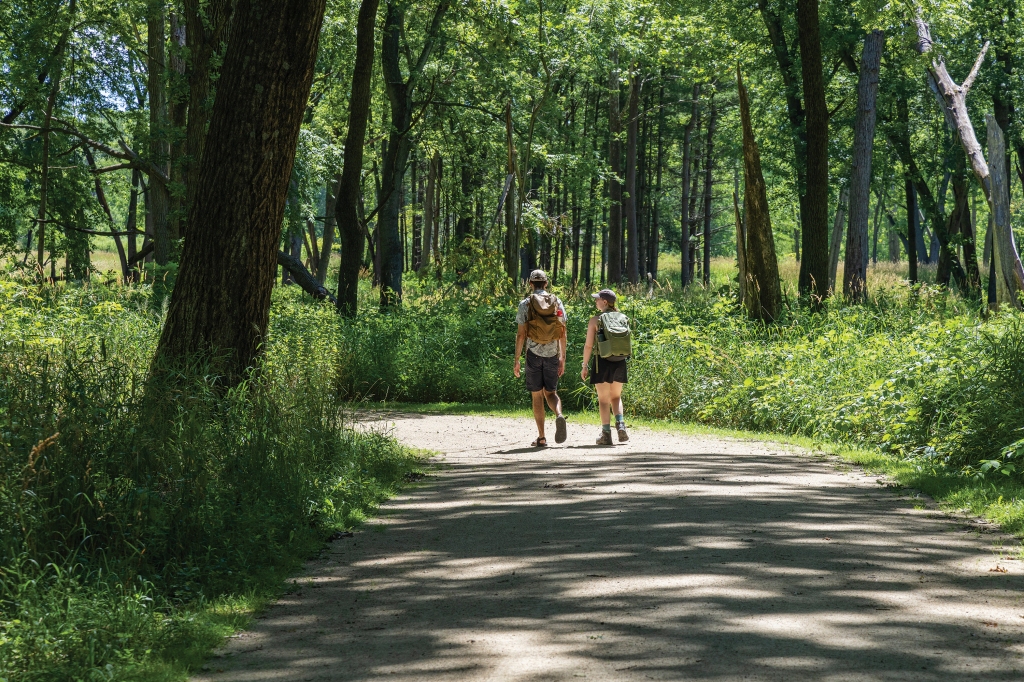
Tranquility Among the Trees
Susmitha Kilaru, a senior IT manager from Hawthorn Woods, found solace in forest bathing after balancing a busy career and family life. She earned her certification as a forest therapy guide in 2023. Her family loves the outdoors and has fond memories of biking the trails at Lakewood in Wauconda.
“Forest bathing has been life-changing for me,” Kilaru said. “It’s a simple, powerful way to slow down, clear your mind and reconnect with nature and yourself.”
A donor to the Preservation Foundation of the Lake County Forest Preserves, Kilaru now gives in a new way: by offering forest bathing sessions to our volunteers.
In today’s fast-paced world, the need for this kind of pause is stronger than ever. Constant notifications, packed schedules and digital overload take a toll, Kilaru said.
“Stepping into nature helps quiet the mind. It eases stress and anxiety, boosts your mood and immune system and deepens your connection to the natural world.”
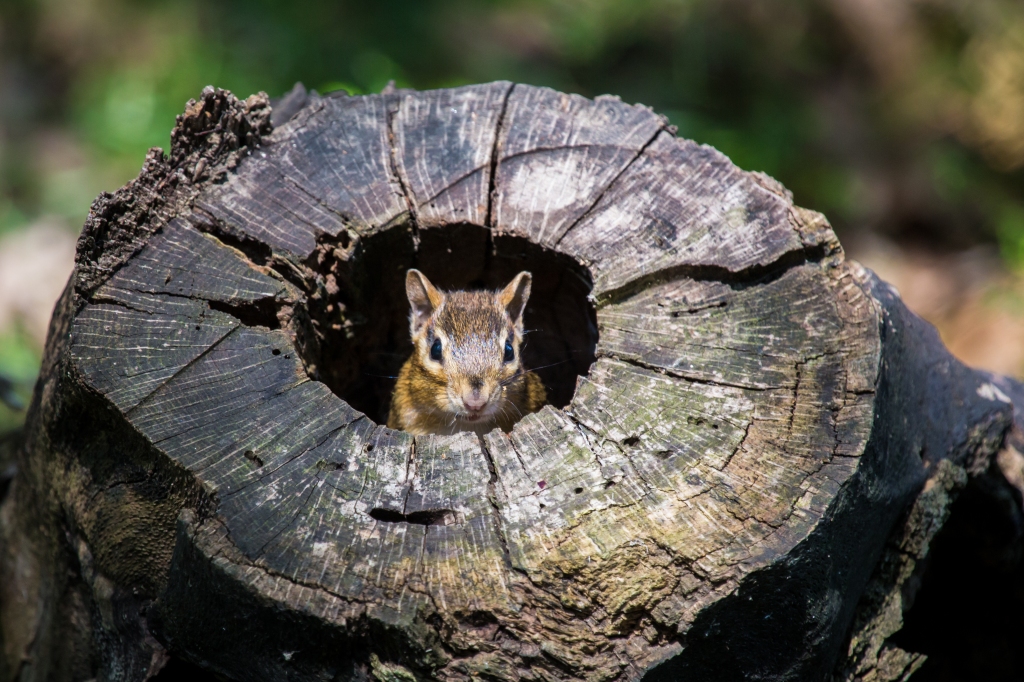
Find Calm in Forest Gems
These six forest preserves offer a chance to slow down, breathe deeply and immerse yourself in the landscape’s gentle embrace. Find the perfect escape near you.
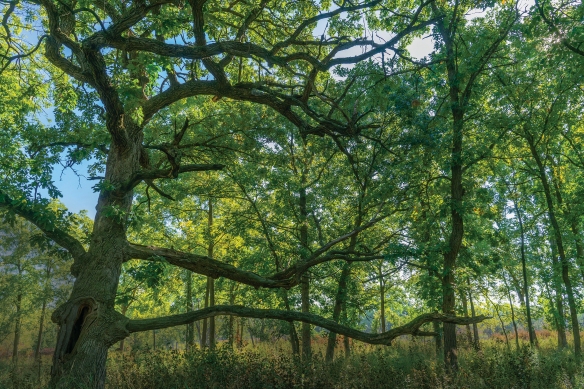
Grant Woods in Ingleside
Wander scenic trails through woodlands, prairies and marshes. One area, designated as a protected Illinois Nature Preserve, was never farmed and thus is rich in rare native plants. Experience the beauty of a tamarack bog, a wetland dominated by tamarack trees. Year-round glimpses of deer, hawks and other wildlife abound.
Fort Sheridan in Lake Forest
This preserve boasts sweeping views of Lake Michigan and a blend of wooded areas, bluffs and lakefront. Six ravines and 2.9 miles of shoreline provide a protected home for several endangered and threatened species. Parts of the historic fort, established in 1887, still stand.

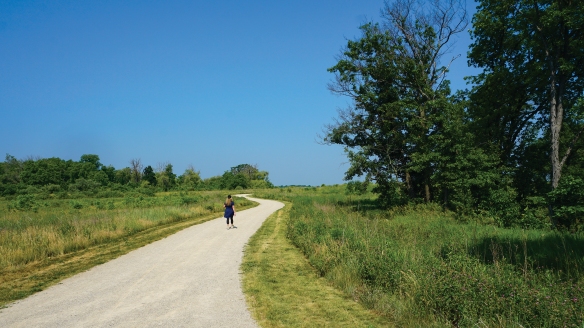
Ethel’s Woods in Antioch
Winding trails and scenic overlooks reveal panoramic sights of a meandering stream and vast woodlands, inviting you to walk at a relaxed pace. Along the eastern edge of this preserve are 170 acres of centuries-old bur oak, white oak, shagbark hickory and black walnut trees.
Fox River in Port Barrington
Situated along a peaceful stretch of the Fox River, the site features rolling landscapes, oak savannas and pristine wetlands making it ideal to observe a diverse range of birds, from majestic eagles to graceful herons and egrets.
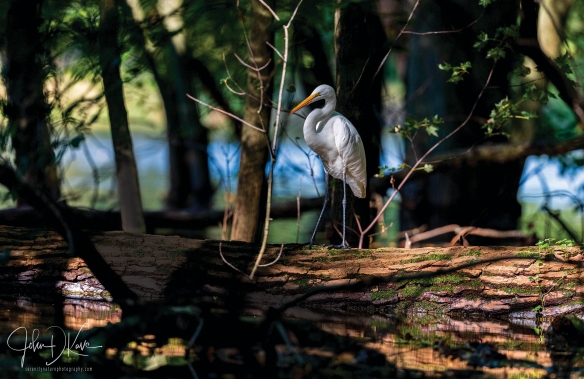
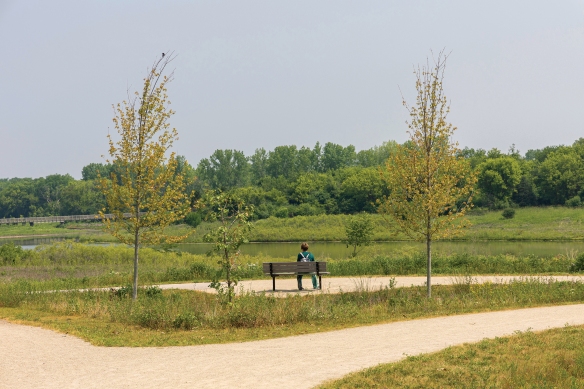
Buffalo Creek in Long Grove
A perfect spot to pause, relax and take in the sights and sounds of tranquility. Much of this preserve is carefully managed for flood control, evident in the dam on Buffalo Creek and the calm reservoir it creates.
Spring Bluff in Winthrop Harbor
Tall grasses sway in the breeze as sweet Joe-Pye weed (Eutrochium purpureum) brightens the view. An observation deck offers a 360-degree perspective of the preserve’s dramatic landscape, as well as Lake Michigan and adjoining natural areas. Spring Bluff is primarily wetlands with oak savanna and prairie.
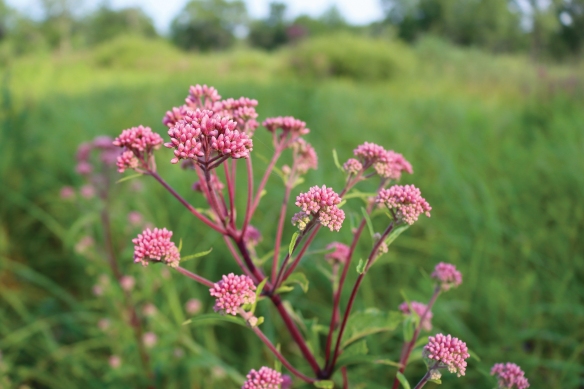
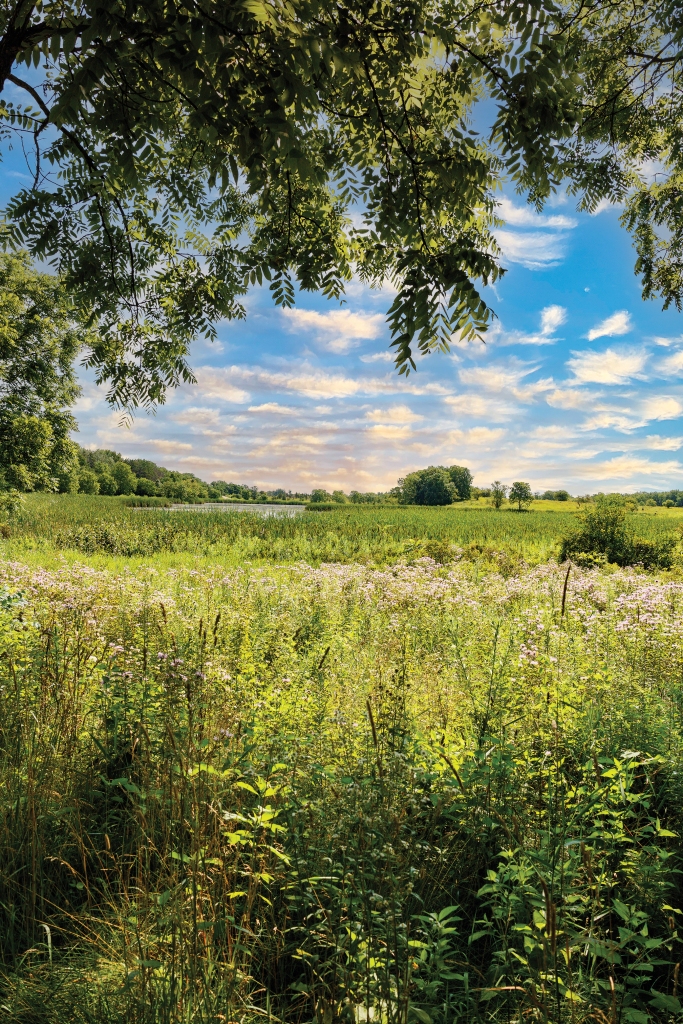
Forest Bathing 101
Curious about forest bathing? The best part is how easy it is to begin. Wherever there are trees, there’s an opportunity to practice.
- Find a quiet natural area. Look for a forest preserve where you can walk leisurely without interruptions. It doesn’t need to be remote, just peaceful.
- Leave distractions behind. Silence your phone and avoid bringing items that might pull your attention away, such as headphones or reading material.
- Slow down. This isn’t a hike or workout. Walk freely or find a comfortable spot to sit. Let your body move at a relaxed pace.
- Breathe deeply. Take slow, deep breaths. Inhale through your nose and exhale through your mouth. Let your breath help you settle into the moment.
- Engage your senses. Notice the color of the leaves, the sound of birds, the texture of tree bark, the scent of the air. Try feeling the breeze on your cheek or noticing how the light filters through the trees.
- Be present. If your mind wanders, gently bring it back to what’s around you. There’s no right or wrong way to do this. Just focus on being in the moment.
- Take your time. Aim for 30 to 60 minutes, but even a shorter session can help. The goal is to feel refreshed, not rushed.
Images © Bob Callebert, Jeff Goldberg, John D. Kavc, Kimberly Landmann, R. Scott McNeill, Dahai Zang.